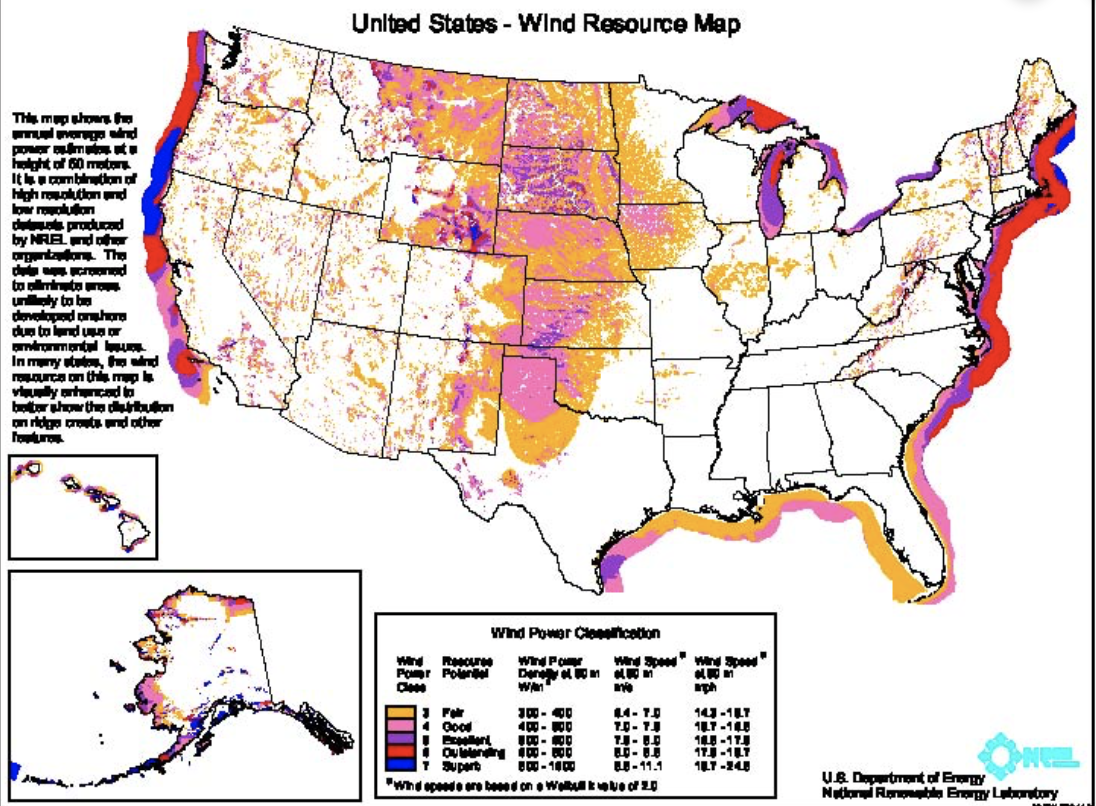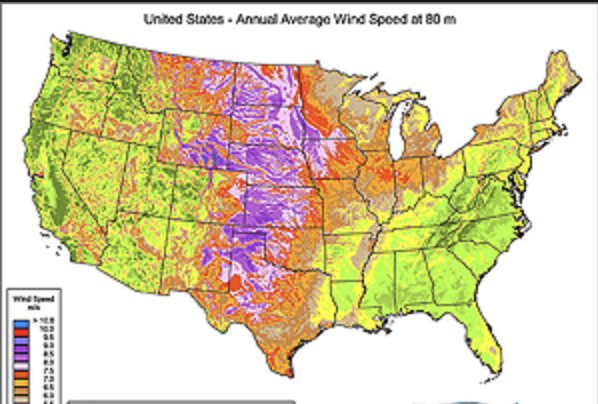Take a look at a map of wind energy potential in the U.S.
Big wind developers have overbuilt in the Midwest, and now they're out of nearby users. The more they build, the more they need to export, and export to load centers requires billions (or even trillions) of dollars of new electric transmission. That's expensive! And it's even more expensive to bury it, so big wind and big transmission developers have been hard at work trying to necessitate big overhead transmission builds that will fly over all those communities between the middle of the country and the coasts.
And now, finally, the populated coastal states have figured out that harvesting nearby offshore wind for their own use, instead of importing it from the middle of the country, makes financial sense. It keeps their energy dollars in their own state and region and fosters a whole new offshore wind industry in their communities that will provide local jobs and economic development. Win-win!
Except the people who live there don't want industrial energy infrastructure in their own back yards. They don't want to see wind turbines on the horizon or have their night views ruined by blinking red lights. And they certainly don't want their beaches disturbed by new electric cables connecting offshore wind turbines to their already substantial transmission networks.
But they still love wind, just not in their own backyard.
Fenwick Island resident Tom Brennan asked why consideration isn’t given to putting windmills closer to Indian River Inlet, and “continuing the commercialization up there instead of ruining of what we have down here?”
Ms. Dudley Eshback referred to periodic flooding at Fenwick Island State Park. “Should the proposed major power transmission plant be flooded following one of these regularly occurring and increasingly frequent storms imagine the public safety impact. It could be very disastrous,” she said. “We must explore alternative, clean sources of energy. And I’m not an expert on wind energy, turbines or transmission stations but I do know it is folly to consider further developing and destroying what little open space is left.”
Well, welcome to the world of industrial renewables, everyone! The people in the middle of the country don't want it either, especially when they will receive absolutely no benefit from it. Nobody in the middle of the country wants to have their horizon ruined with turbines and blinking red lights. And that's not the entirety of onshore wind... they're built so close to existing homes and businesses that the people suffer from shadow flicker and other health effects.
Nobody wants to live near industrial onshore wind installations. Nobody wants to live near industrial offshore wind installations. Nobody wants to live near industrial wind installations!
Maybe industrial wind isn't the answer? Industrial wind actually supplies a very small percentage of our power. It's impact on climate change is really very small. However, the big wind industry has been pumping out the propaganda so long, that a lot of Americans are completely brainwashed into thinking that it is the solution to climate change. And the big wind industry has been making money hand over fist installing its infrastructure across the country. The intersection of corporate profits and climate change propaganda deserves careful thought.
Industrial wind is an orphan nobody wants. Instead of pushing it off somewhere else and accepting the sacrifice (as long as it's not OUR sacrifice), isn't it time we all stand up and find another solution that doesn't cause any sacrifice? The reality of industrial wind is now being revealed to the populated coastal areas, and they don't like it. Eventually will also realize that it's nothing more than a corporate money-making scam that does little to reverse climate change.
We need better solutions, for everyone!



 RSS Feed
RSS Feed